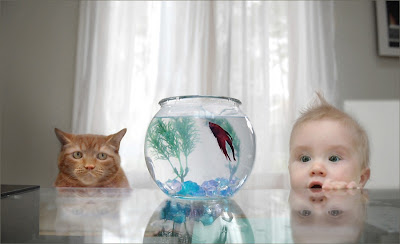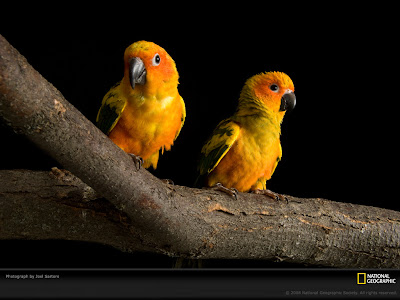* How To Care For a Baby Iguana Info and Iguana Facts : If there are baby dogs, cats or rabbits, then there are also baby iguanas. It is during this stage that these iguanas appear in their most fragile and need your loving care the most. Although they appear like they are easy to take of in their small appearance, proper precaution is needed so that they will be healthy in their older years.
Just like any juvenile pet, there are certain requirements that you need to provide for your baby iguana. Although they are not as meticulous and as herd to get as any other pet food, you should also consider if these things will be perfect for your iguana. You do not want them to become sickly and eventually die even before you see them in their full sizes, now do you?
Here are some of the important factors you need to consider when taking care of your baby iguana.
Not just any other type of cage will do. Though it does not matter what kind it is made of, you need to consider what should be inside the cage that the iguana will need.
An example is having something in them that will keep your pet warm during the night. Check out for carpeting or artificial turf to cover the flooring area of the cage. If you do not have the budget for it, you can opt for newspapers because they work just as well.
Since iguanas live on trees, you need to set up some branches for your pet to climb on to. Climbing on branches will form part of their leisure and movements. Just make sure that the branches are stable enough to hold their weight in case they lay down on them.
Baby iguanas should always be warm in order to stay healthy. Since you have no way of telling this just by looking at them, you can put a thermometer inside their cage so you can monitor the changes in the temperature inside the cage.
Make certain that you maintain a temperature of 70 degrees during the night and 85 degrees in the day. It is also a good idea for the cage for its shelter to be placed near a source of heat. You will see that your pet is inclined to have a comfortable rest if they stay close to that heat being radiated.
Special monitoring of temperature is required during the cold season. Check the shelter regularly. You would not want your pet to freeze to death without you knowing.
Baby iguanas need to have a diet that is rich in Vitamin D3, phosphorous and calcium. Lots of greens are also needed. You can also give them vegetables and fruits that you yourself are consuming.
Baby iguanas are not used to being fed any kind of food. Their digestive system is not as strong and as flexible as cats or dogs. Know what kind of food they can take and what they cannot.
Your baby iguana can grow up healthy and strong just by taking care of them the way you do any kind of pet. If it is absolutely necessary, you can consult a vet that specializes in iguana for things that are far beyond your comprehension. They will be able to give you sound advices regarding your baby iguana and the things that you need to do.
 iguana Picture
iguana Picture
 iguana Eye Closeup Picture
iguana Eye Closeup Picture
 iguana Pet Image - Green
iguana Pet Image - Green
 Pet Care Information Image of iguana
Pet Care Information Image of iguana
 iguana Pet Picture
iguana Pet Picture
 A Pet Care Person with iguana Pet
A Pet Care Person with iguana Pet
 iguana Pet Picture
iguana Pet Picture
 iguana PictureIguana Facts Information :
iguana PictureIguana Facts Information : 1) Iguanas belong to the lizard family group known as “Iguanidae”, which is where the name “Iguana” comes from. Although iguanas have short limbs, they are mighty powerful and their claws are very sharp. These claws serve as an aid to climb up branches and dig burrows in the ground. Simulated or real branches should therefore be placed in the cage of your iguana as they love to climb.
2) The tail of an iguana is strong and serves as a defense mechanism against predators and enemies. They usually whip their tails in the air to scare off attackers that come too close. They also use their tails to assist them in swimming, which they enjoy. There is a noticeable large flap of skin on the sides of the throat which is called a dewlap. Male iguanas use this for intimidation of enemies and to impress females. The dewlap also regulates the body temperature of the lizard. There is a line of very soft spines that run along the mid back and neck regions. Males will have longer spines than the females.
3) Males are much larger in size than females. During the mating season, the male’s body becomes very apparent and distinct. Both male and female posses 12 – 13 pores beneath their thighs which serve to produce a waxy substance for the purposes of marking territories and identification. As males get older and more mature, their pores begin to protrude outwards which assists them during copulation.
4) There are tiny scales that cover the skin of the iguana but unlike chameleons, iguanas generally cannot change their skin color. However during exposure to light, a few parts of their skin darken in color. When iguanas are young they are pale green colored with black ringed tails but as they grow older, their colors become more earthy and dark.
5) Iguanas are very cautious animals as they are alert to any dangers around them. Their good sense of sight, hearing, and smell assists them to run, hide away, and survive. Even though they may seem to be clumsy, they are excellent at climbing and swimming. In the mornings they enjoy basking on the tree tops and if they sense danger they usually jump down into water.
6) Iguanas are most definitely herbivorous. This is because their metabolisms are designed to absorb plant proteins. Animal proteins are too complex to be absorbed and cannot be used properly as nutrients.
7) Iguanas are generally easily trained to do a variety of things such as tricks, toilet training, and finding their way home. This subverts the assumption that iguanas are stupid animals.
8) The breeding season for most iguanas is in January and February. The gestation period is two months and then 25-40 eggs are laid in soil and protected until they hatch two weeks later. (Information courtesy by petiguanacenter.com)




















 iguana Picture
iguana Picture iguana Eye Closeup Picture
iguana Eye Closeup Picture iguana Pet Image - Green
iguana Pet Image - Green Pet Care Information Image of iguana
Pet Care Information Image of iguana iguana Pet Picture
iguana Pet Picture A Pet Care Person with iguana Pet
A Pet Care Person with iguana Pet iguana Pet Picture
iguana Pet Picture iguana Picture
iguana Picture Two Friends - True Friends
Two Friends - True Friends Beautiful Town in Italy Photo
Beautiful Town in Italy Photo Great Work - Photo from In My Home
Great Work - Photo from In My Home Moon night - Shaupmeyer tree full moon Wallpaper
Moon night - Shaupmeyer tree full moon Wallpaper Beautiful Photograph - Women
Beautiful Photograph - Women Amazing Animals - Frog Photograph
Amazing Animals - Frog Photograph Amazing Stupid Photo - Train
Amazing Stupid Photo - Train Wonderful Top Rated Picture
Wonderful Top Rated Picture Bird Monkey now Friends
Bird Monkey now Friends Monticello Dam has the largest drain hole in the world
Monticello Dam has the largest drain hole in the world Snow Town at Night Picture
Snow Town at Night Picture Otters - Animals Pics
Otters - Animals Pics Insects Ladybugs Photograph
Insects Ladybugs Photograph Two Ways of Looking
Two Ways of Looking Tree Red Autumn Photograph
Tree Red Autumn Photograph Body Paint - Color Women Paint
Body Paint - Color Women Paint Guess - This a Paint or Photograph
Guess - This a Paint or Photograph Sun Conures - Birds
Sun Conures - Birds Green Tree Frogs
Green Tree Frogs Eyelash Viper - Yellow Snake
Eyelash Viper - Yellow Snake Triplefin Fish
Triplefin Fish  Blue-Footed Booby
Blue-Footed Booby